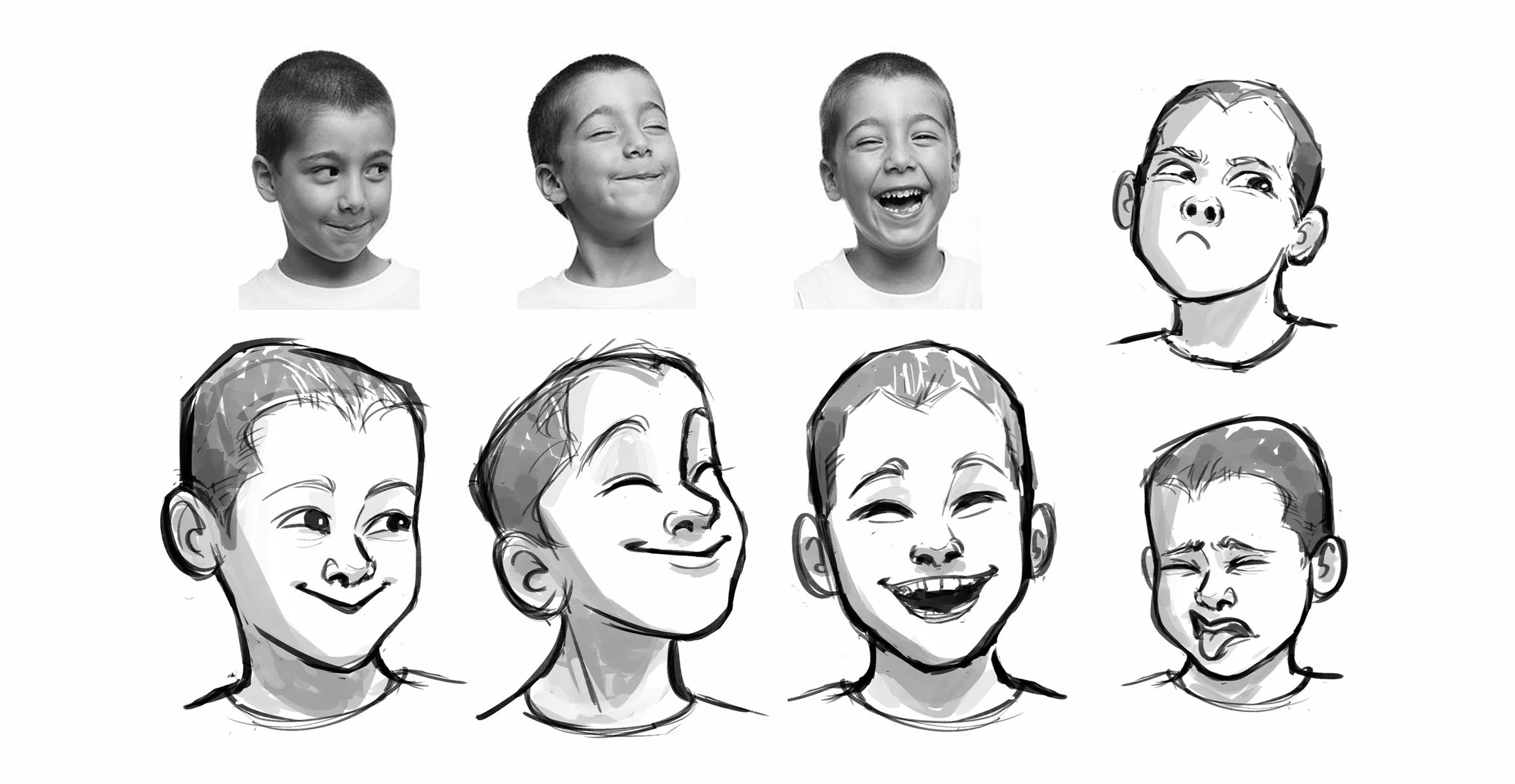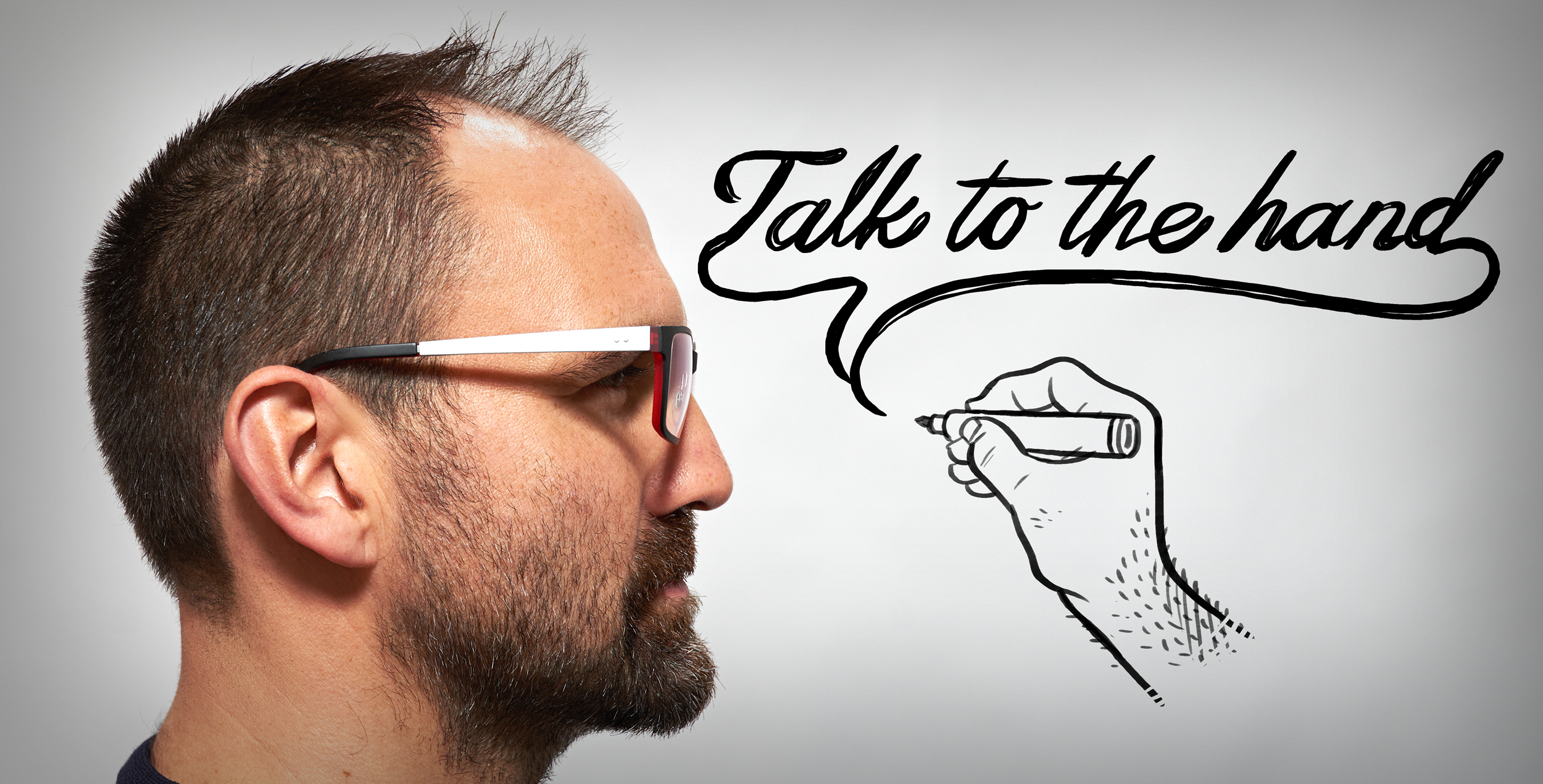
Cognitive illustrator Aggie shows how reference images can only get us part of the way in designing appealing and emotive characters
“A little bit of caricature is needed to stylise and give more appeal to the visual result.”
- Aggie Mardiyah
Conveying complex ideas and feelings through pictures can be more effective than relying on mere words. That’s why people come to us - we bring stories to life in a way that’s more fun and engaging!

Cognitive illustrator Aggie Mardiyah
A lot of the time, we use characters to help aid with our storytelling which is why, as an Illustrator, I often study figures in real life and from video/photo references to improve my anatomy and sense of motion. However, through repeated practice and experience, I’ve learned that what we see in real life doesn’t always translate well into clear shots and when drawn, can feel quite lifeless. This is where a little bit of caricature is needed to stylise and give more appeal to the visual result. This is also why animated characters are often simplified and exaggerated - because they help tell a better story.
Exploring movements and poses that don’t necessarily obey the rules of real-life physics, is probably one of the best, fun and challenging things about being an illustrator. A good way to do this is by gesture drawing, which is a method of capturing the feeling of a figure’s movement. You can do this by drawing the pose as you see it in reference, then figuring out which parts of the body you can bend and push to make the pose work better. Or, like me, you can start by cutting out all the fluff and use just a few pencil strokes to capture the line of action, and then build on it. However you choose to do it, a gesture drawing should be able to fully express the action and convey the intended emotion in the clearest way possible – it’s not always just about how accurate your drawing looks (although it is important to keep things in proportions), but rather how it feels!

"A gesture drawing should be able to fully express the action and convey the intended emotion in the clearest way possible."
- Aggie Mardiyah
As well as body language, knowing how to communicate what a character is feeling through their facial expression is equally as important. The same rules of exaggeration can be applied here to intensify emotions. It should, however, be done with more care as modifying a human-like face too much can lead to an unsettling outcome - unless that was the intention!
There would be times when I need to draw a character pulling some type of expression, but not really knowing how to draw it. This is where using multiple photo references or even a mirror can help massively! You shouldn’t be looking to copy exactly what you see, instead you should study the angles, how the face squash and stretch, which bits to accentuate, and then adjust and apply it to your character.
“Remember, drawing from imagination should be about using knowledge and experience”
- Aggie Mardiyah

Remember, drawing from imagination should be about using knowledge and experience – if you’re still unfamiliar or unsure of something, there is no need to feel bad about using references. It doesn’t make you less of an artist!

Visual thinking is at the heart of whiteboard animation. It helps us to make information engaging, entertaining and memorable - but how does it work?
When it’s done well, this combination allows whiteboard animation to explain complex ideas in an engaging and accessible way, expanding their reach and impact!
In this blog, Andrew and Dan take us through some of their most meaningful and memorable moments during the making of Sir Ken Robinson’s ‘A Future For Us All’.
The BLT combines our passion for visual thinking, the week’s news and our creative team to create a delicious visual treat for your feed every week!
In this blog, Andrew reflects on the origins of whiteboard animation, the RSA Animates and the journey that led to the creation of this new series, Talk To The Hand.
We've been wanting to make one of these for quite a while and it gives us the opportunity to go behind the scenes, and explore the creative process of creating the latest RSA whiteboard video.
Read about our Senior Creative Sarah Verrall’s experience of bringing the vision and mission of CIRAD to life in our whiteboard animation for them.
Visual metaphors give businesses the power to create adverts and communications that engage audiences, explain ideas fully and leave a lasting impression. This blog post explains more about visual metaphors and how to create them.
Visual storytelling is a powerful tool, but it requires some key components. This blog looks into these and the way visual storytelling can help you transform your message into rich and engaging visuals.
The RSA has won a Webby Award for their RSA Shorts series, which has been running since 2012. We asked Animator and co-founder of Superdoodle Katy Ross about the experience of creating RSA Shorts.
Coronavirus has had an impact on every aspect of our lives, in a way unprecedented in modern memory. It’s a complex topic, subjected to frequent change and misinformation.
To keep our team at the height of their visual thinking and storytelling abilities, we asked them to keep sketchnote diaries. These are an amazing way to practice the highly crafted elements that go into our whiteboard animations.
Often the very first books we encounter are picture books, our first introduction to the power of rich visual language. While our books change, the power of this language doesn’t. Senior Creative Dan Stirrup reflects on this visual language from picture books to explainer films and Whiteboard Animation.
Explainer videos are an amazing tool. They allow you to communicate your story powerfully and memorably. This blog post explores when you should use them and which type of explainer video is right for you.
Working with Global Clients we are often asked to translate their films into multiple languages - there are four methods of making multiple language explainer videos. Read our blog to find out more!
Originally published by the RSA in 2015, Andrew Park muses on his creation of the RSAnimates style and the invention of whiteboard animation. ‘When one returns to something there is a tendency to look back over what went before - to assess where you have come from in order to move forward.’
Read about the new whiteboard animation film we made for Cynthia Hall Productions for the Karyn Purvis Institute of Child Development and how we applied our visual thinking to explain attachment theory and the technique of TBRI (Trust Based Relational Intervention)
A lot of the time, we use characters to help aid with our storytelling which is why, as an Illustrator, I often study figures in real life.
Working with Project Everyone on @The Global Goals we have helped them supercharge their social media by presenting their facts on project progress in visually interesting ways, driving up engagement and reach.
It is interesting to see how the fundamental tools we use everyday at Cognitive, such as mapping out a story arc or using a metaphor to simplify and explain a complex idea, can be used in the pursuit of mental and spiritual improvement.
At Cognitive we tell stories. If you want to remember a message then storytelling is the best vehicle to do this. Our brains are far more engaged by stories than lists of facts and figures.
Powerful storytelling in games is a key feature for creating a world that players can immerse themselves in. Broaching a variety of difficult subject matters, interactive software has increased it’s suitability and accessibility to a wider audience and it’s fair to say the gaming world has expanded its horizons exponentially, giving it’s creative fantasy world a fundamental core of all-too-real issues.
In a lot of our Cognitive films, we are required to draw a public figure within the animation, whether it be a celebrity or a company employee. In this blog one of our brilliant illustrators takes us through the steps to creating an uncanny portrait.
Easing is a technique that allows us to humanise the animation and enable viewers to follow narration more smoothly - here we show you the effect works and why our animations are so successful.
At Cognitive we love unpacking complex information and mapping it out in space and stories like ‘What the suffragettes did for us’ are a great opportunity to supercharge the narrative with emotive drawings and kinetic animation.
When working this way it is best to try and keep a balance between the logic of a piece and the stylistic realisation. We want it to be attractive and engaging but we also want it to make sense to the audience. The key for us is to try and build a map of relationships, a connected diagram to visualise the thought processes of the speaker.
Characters are what drive the emotional reactions of the viewer to a story. The viewer invests their emotions into the characters. Find out how and why we use characters in our work...
Need an image to show joined up thinking? Jigsaw! Collaboration? Jigsaw! The missing piece of a process? Jigsaw! Everything falling into place? Jigsaw!






























Every explainer animation we create is a collaboration between us and our clients. Guided by each client’s essence, goals and message, we create scripted and visual storytelling that is informative, engaging, memorable and relatable. The result is a carefully crafted and bespoke explainer animation.